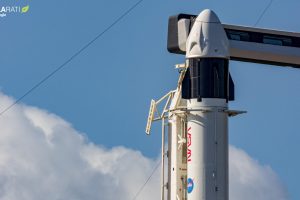- 🚀 SpaceX accused the FAA Administrator Whitaker of making incorrect statements regarding their licensing and compliance.
- 📜 SpaceX disputes claims about not having permits for launches, emphasizing their compliance with FAA licenses for the discussed missions.
- 🌌 There are delays in the Starship launch approval process, partly due to alleged non-compliance disclosures and sonic boom analysis requirements.
- 🗓️ Whitaker defended delays, claiming they were necessary for safety compliance, while SpaceX criticized these as avoidable.
- 🌿 Environmental consultations over sonic boom impacts were cited as contributing to launch delays, despite SpaceX asserting no new impact.
In the fast-paced world of aerospace innovation, delays and disputes can significantly alter the landscape. Recently, SpaceX has found itself in a highly publicized contention with the Federal Aviation Administration (FAA). The core of this dispute revolves around accusations made by FAA Administrator Mike Whitaker, who claimed that SpaceX had launched missions without the necessary permits. This assertion has been met with fierce rebuttals from SpaceX, leading to a complex dialogue about compliance, safety, and regulatory procedures.
Understanding the SpaceX and FAA Dispute
The dispute between SpaceX and the FAA highlights the intricate web of licensing and regulatory compliance required for modern aerospace endeavors. At the heart of the matter are two conflicting narratives:
- SpaceX’s Position:
- SpaceX asserts that all their missions have been fully licensed under the Commercial Space Launch Act.
- The company claims that accusations of non-compliance are baseless and incorrect.
- FAA’s Assertions:
- Administrator Whitaker contends that certain SpaceX launches were conducted without proper permits.
- Whitaker emphasized the necessity of these regulations to ensure public safety.
The Impact of Delays on Starship Launches
One of the critical projects affected by this dispute is SpaceX’s Starship program. Let’s delve into the elements contributing to the delays:
- Regulatory and Compliance Concerns:
- According to Whitaker, SpaceX’s failure to disclose potential violations has delayed the permitting process.
- SpaceX, however, counters by stating that such claims are part of a broader communication gap with regulatory bodies.
- Sonic Boom Analysis:
- The FAA has cited lacking updates to the sonic boom analysis as another reason for delay.
- SpaceX argues that the environmental impact remains unchanged, even with a broader sonic boom area.
The back-and-forth between SpaceX and the FAA demonstrates a clash of priorities. While Whitaker maintains that regulatory caution is necessary, SpaceX suggests that these requirements are often exaggerated, delaying innovation unnecessarily.
Analyzing the Environmental Consultation Over Sonic Boom Impact
Another layer to this dispute is the environmental consultation process involving the Fish and Wildlife Service (FWS). The following points encapsulate the issue:
- SpaceX insists that environmental impacts have not shifted significantly, despite changes in sonic boom projections.
- The FAA’s decision to engage in a new consultation with the FWS introduces a potential two-month delay, which SpaceX views as an avoidable bureaucratic issue.
Lessons from the SpaceX-FAA Dispute
This case study provides several insightful lessons for the aerospace industry and regulatory bodies:
- Balancing Innovation and Regulation:
- While safety and environmental compliance are paramount, regulatory frameworks should adapt to the pace of technological advancement.
- Both parties must enhance communication to minimize misunderstandings and foster mutual goals.
- Importance of Clear Guidelines:
- Stakeholders need clearly defined guidelines to prevent disputes and ensure a straightforward permitting process.
- Shift Towards Collaborative Problem Solving:
- Encouraging more collaborative efforts between companies and regulatory agencies can reduce friction and promote a more streamlined path to compliance.
Looking Forward: The Future of SpaceX and Regulatory Relationships
As SpaceX continues to blaze trails in space exploration, navigating the regulatory landscape remains crucial. The outcomes of this dispute could shape future relations between aerospace innovators and regulatory bodies, potentially setting precedents for how emerging technologies are governed.





